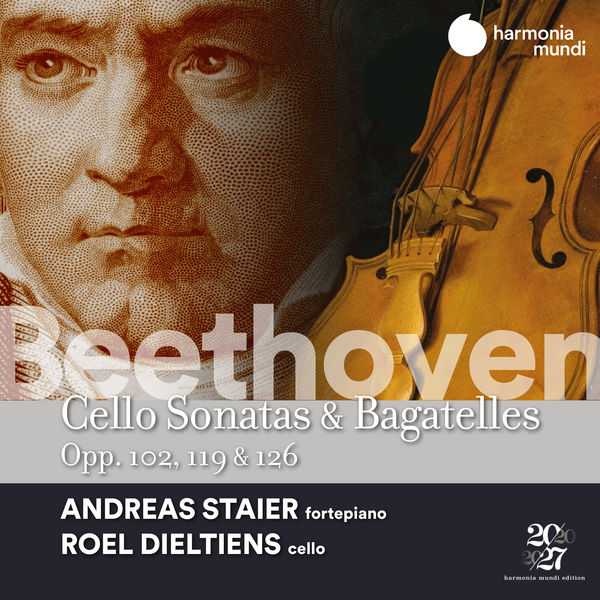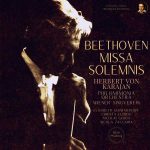

Composer: Ludwig van Beethoven
Performer: Andreas Staier. Roel Dieltiens
Format: FLAC (tracks)
Label: Harmonia Mundi
Release: 2022
Size: 1.04 GB
Recovery: +3%
Scan: yes
Cello Sonata No. 4 in C Major, Op. 102 No. 1
01. I. Andante – Allegro vivace
02. II. Adagio – Tempo d’andante – Allegro vivace
11 Bagatelles, op. 119
03. No. 1, Allegretto (G Minor)
04. No. 2, Andante con moto (C Major)
05. No. 3, À l’Allemande (D Major)
06. No. 4, Andante cantabile (A Major)
07. No. 5, Risoluto (C Minor)
08. No. 6, Andante – Allegretto (G Major)
09. No. 7, Allegro, ma non troppo (C Major)
10. No. 8, Moderato cantabile (C Major)
11. No. 9, Vivace moderato (A Minor)
12. No. 10, Allegramente (A Major)
13. No. 11, Andante ma non troppo (B-Flat Major)
Cello Sonata No. 5 in D Major, Op. 102 No. 2
14. I. Allegro con brio
15. II. Adagio con molto sentimento d’affetto
16. III. Allegro – Allegro fugato
6 Bagatelles, op. 126
17. No. 1, Andante con moto, cantabile e compiacevole (G Major)
18. No. 2, Allegro (G Minor)
19. No. 3, Andante, cantabile e grazioso (E-Flat Major)
20. No. 4, Presto (B Minor)
21. No. 5, Quasi allegretto (G Major)
22. No. 6, Presto – Andante amabile e con moto (E-Flat Major)
From the mid-1810s until the end of his life, Beethoven constantly tested to the limit the forms he had inherited from Haydn and Mozart. His last two cello sonatas bear witness to this structural preoccupation, which was to open up so many new spaces . . . as do the final sets of Bagatelles, as disconcerting as they are innovative! Two genres shrewdly linked by Andreas Staier and Roel Dieltiens in these interpretations, in which eloquence merges with historically informed performance practice.



